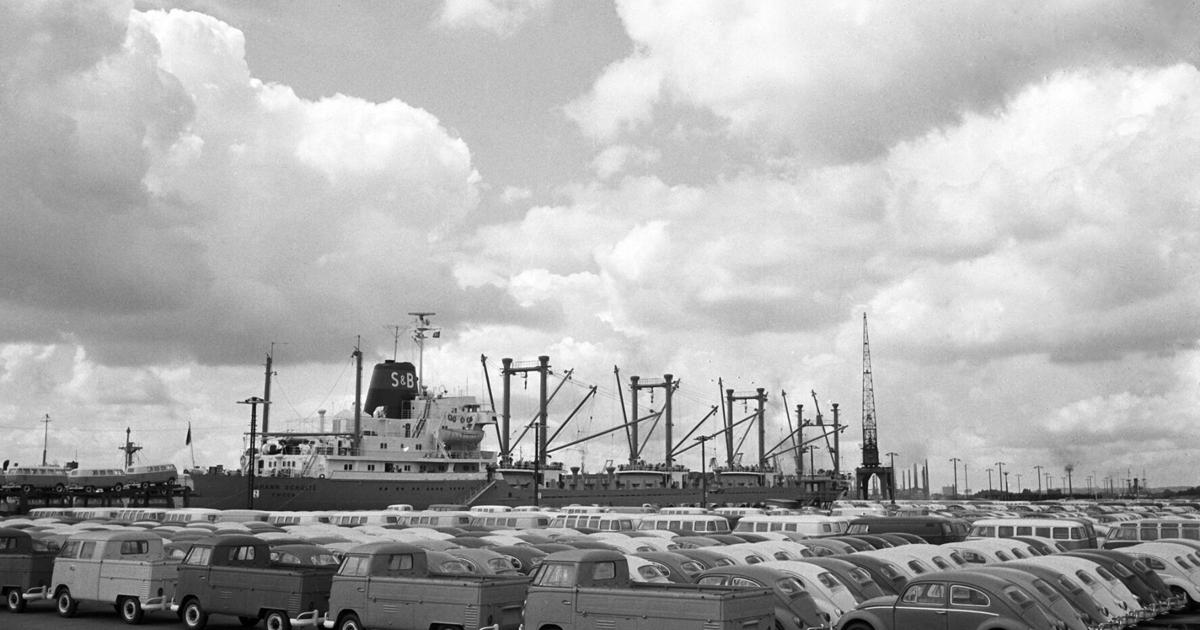The “chicken tax,” a 25% levy first imposed in 1963, still prevents most European and Asian pickup trucks from entering the United States, highlighting how a trade measure born of a poultry dispute can echo through generations, affecting vehicle prices, manufacturing strategies, and consumer choice more than six decades later.
With President Donald Trump’s recent tariff increases renewing debate over protectionism, the longevity of this obscure duty underscores how difficult it can be to roll back trade barriers once constituencies form around them.
Origins: Poultry Dispute Sparks Pickup Tariff
In 1962, European nations—led by France and West Germany imposed high tariffs on US chicken exports, effectively excluding American poultry producers from a lucrative market. In retaliation, President Lyndon Johnson’s administration imposed a series of “countermeasures” in 1963, including:
- A 25% tariff on “motor vehicles for the transport of goods” (pickup trucks)
- Tariffs on potato starch, dextrin, and brandy
At the time, only a small fraction of US auto sales were imports. Johnson aimed to punish German automaker Volkswagen, which had begun gaining traction in America, and to signal that trade retaliation would be taken seriously.
“It was a classic case of tit‑for‑tat diplomacy,” says trade attorney Lawrence Friedman. “But unlike most temporary tariffs, this one stuck.”

Market Impact: Higher Prices and Domestic Focus
The chicken tax effectively shut out almost all foreign‑built pickups, leaving General Motors, Ford, and Chrysler—America’s “Big Three”—to dominate the market. According to Jonathan Smoke, chief economist at Cox Automotive:
“Truck prices rose 5–6% a year after the tariff, while car prices climbed only about 2% annually. Most buyers never realized they were paying a premium because of a 1960s chicken spat.”
By insulating domestic producers from competition, the tariff boosted automaker profits and encouraged factories to shift their focus toward pickup production, the segment with the highest profit margins. Even after Europe rescinded its chicken duties in 1964, the tariff on foreign trucks remained firmly in place, thanks to the lobbying power of automakers and the United Auto Workers union.
Tariff Engineering: Loopholes and Legal Battles
Faced with hefty import duties, foreign manufacturers and even US companies sought creative workarounds, a practice known in trade circles as tariff engineering:
- Bedless chassis: Automakers shipped truck frames without beds, then attached the payload boxes after clearing customs.
- Passenger-vehicle classification: Companies added seats to trucks to reclassify them as passenger vehicles. Subaru’s BRAT famously included two rear‑facing seats in the cargo area.
- Removable seats: Ford imported Transit Connect vans from Europe with extra seats bolted in; crews removed them post‑import. This strategy resulted in a $365 million fine from the DOJ against Ford in 2024.
“These examples show how industries will bend rules when billions of dollars are at stake,” Friedman notes.
NAFTA’s Permanent Bypass
The 1994 North American Free Trade Agreement (NAFTA) established a lasting legal mechanism to circumvent the chicken tax. Automakers began building pickups destined for US buyers in Canada and Mexico, where shipments into the United States are tariff‑free. For instance:
- GM’s Silverado is assembled in Michigan, Ontario, and Chihuahua.
- Ford’s F‑Series production spans Kentucky, Ohio, and Sonora.
However, economists argue that proximity to markets, rather than just tariff avoidance, drove these investments, as passenger-vehicle duties remained a modest 2.5%.
“Most of the incentive was market access and supply‑chain efficiency,” says Dan Ikenson, former Cato Institute trade director. “The chicken tax played a role, but it wasn’t the only driver.”
Market Share Shifts: Foreign Brands Advance
Despite protecting pickup imports, the chicken tax did not guarantee long‑term dominance for US manufacturers. As foreign brands expanded US plant footprints, their combined share of the overall light‑vehicle market rose steadily:
- By 2007, Asian and European marques outsold the Big Three in combined car and truck sales.
- In 2024, foreign automakers produced 4.9 million vehicles in US plants, compared to 4.6 million by GM, Ford, and Stellantis, which accounted for 62% of total US vehicle sales.
Nevertheless, the Big Three still command roughly 80% of the pickup segment, underscoring the chicken tax’s enduring influence on truck inventories and pricing.
The Trump Tariffs and Lessons Learned
President Trump’s broader tariff agenda—lifting duties on Chinese goods to 145% and prompting Beijing to retaliate—has reignited interest in protectionist measures. Yet the chicken tax offers a cautionary tale: once tariffs reshape markets and forge support among affected industries, dismantling them becomes politically fraught.
“Tariffs create vested interests overnight,” Ikenson warns. “Even if you dial them back, the constituencies they foster resist reversal.”
As the US negotiates new trade deals and considers future levies, policymakers must weigh the long-term market distortions that may persist beyond the grievances they aim to address. The chicken tax stands as a six-decade testament to how short-term retaliation can become a permanent fixture of trade policy, affecting prices, production, and consumer choice for generations.
For more business News, check PGN Business Insider.
















